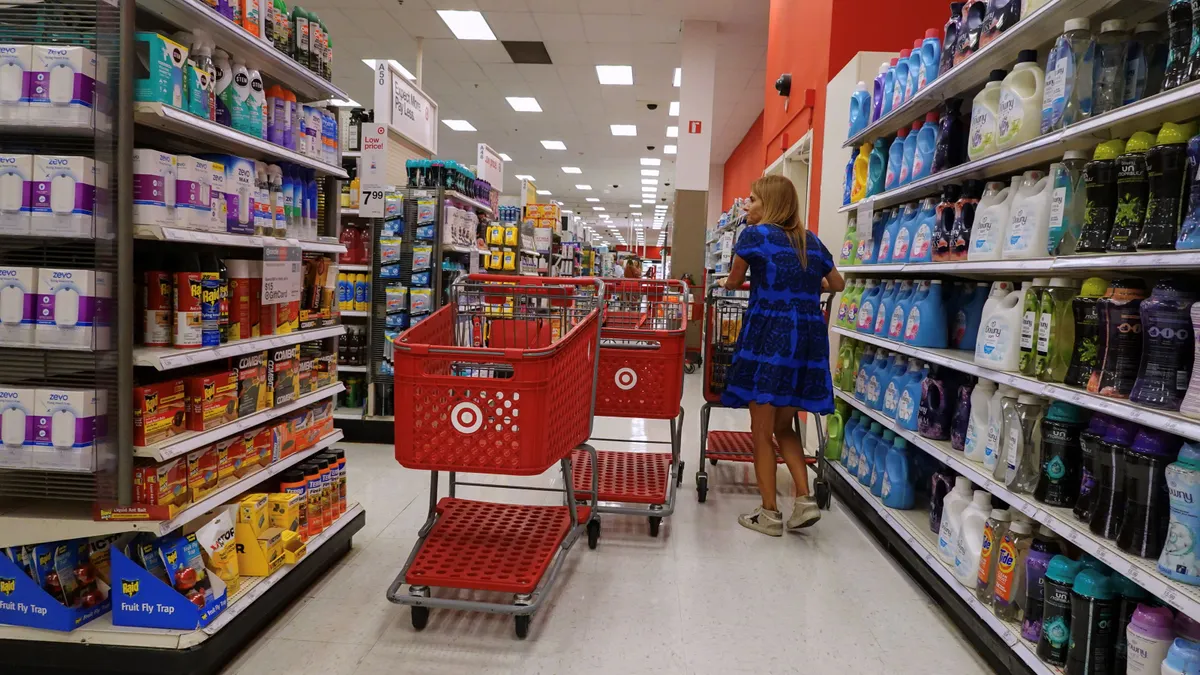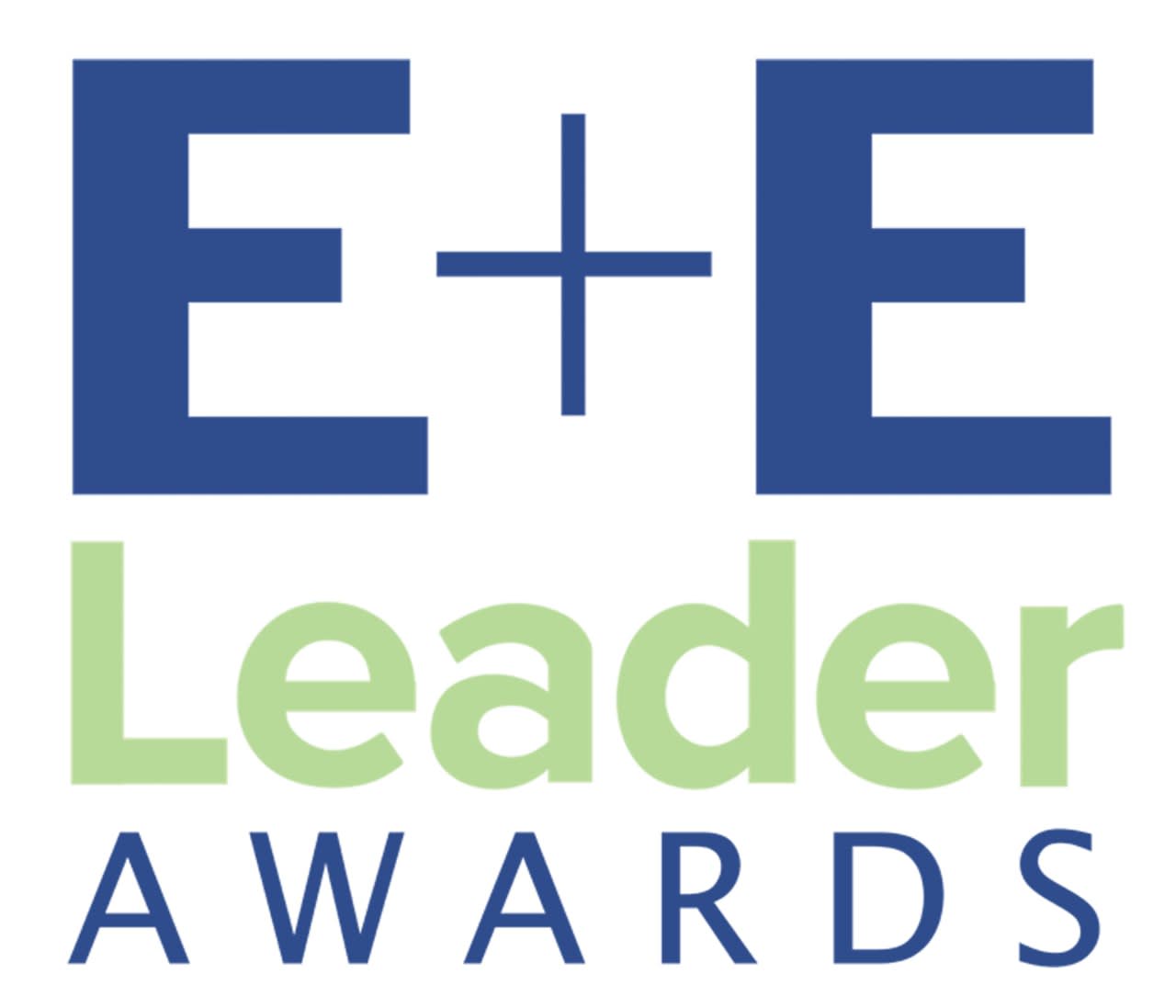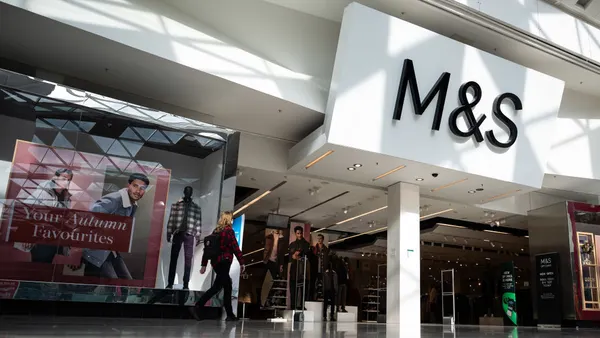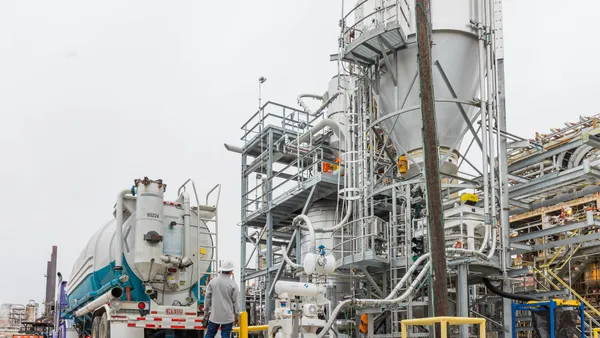Target says it will not meet certain 2025 sustainability targets it set for itself and is rethinking packaging goals, per the retailer’s 2025 sustainability and governance report released this month.
The company launched its Target Forward sustainability strategy in 2021. In this year’s progress report, the company denoted each of its goals as either “achieved” — meaning met or exceeded on or ahead of schedule, with validated results —“progressing” — meaning moving in the right direction, generally on track and continued focus needed — or “evolving” — meaning the goal is actively under review due to changing conditions, priorities or feasibility.
| Packaging metric | FY2022 | FY2023 | FY2024* |
| Percentage owned brand packaging that is recyclable, compostable or reusable | 22% | 32% | 34% |
| Total weight of plastic packaging (metric tonnes) | 84,929 | 83,269 | 71,300 |
| PCR (metric tonnes) | 17,437 | 12,888 | 9,034 |
| Percentage of plastic in owned brand packaging that is PCR | 15% | 15% | 13% |
| Minimum percentage of recycled content in plastic bags | 40% | 40% | 40% |
*Target's 2025 report covers fiscal year 2024, the period between Feb. 4, 2024, and Feb. 1, 2025.
Target was working to cut the total virgin plastic it uses annually in its owned brand packaging by 20% by 2025, from a 2020 baseline. While the company said it’s seen year-over-year decreases in the tracked food, beverage, essentials and beauty categories, volumes still exceed a restated 2020 baseline by about 10%.
Target reiterated many of the same headwinds it outlined in previous years’ reports. “Regulations, supply chain constraints, changing industry measurement and affordability trade-offs as well as new owned brand categories and increased sales from our baseline have impacted progress, and we do not anticipate reaching this goal by 2025,” the company said.
Target did not meet its 2025 goal to make all of its owned brand plastic packaging recyclable, compostable or reusable. The company acknowledged it will not close the significant gap between the 34% it achieved in 2024 and the 100% goal by 2025.
“Despite progress, infrastructure advancements are needed across collection, recycling and refill solutions,” the company stated. Further, “industry-wide systems must be easy and convenient for our guests — and all consumers — to adopt, in order to reduce both the amount and impact of plastic packaging.”
Additionally, the company is rethinking its PCR goal after making slow progress on incorporating postconsumer recycled content in its owned brand packaging, where it had been striving to hit at least 20% by 2025.
“While industry efforts have improved the availability of PCR materials, limitations in cost, supply and technical feasibility have hindered mass change across our owned brand products and packaging,” the company said.
There have been some brand and item-specific sustainability wins, Target detailed. In one example of a plastic-reducing change, the company’s Good & Gather food brand implemented a peel-and-reseal top on containers of leafy greens. Target said the film feature uses an average of 35% less plastic than a rigid lid.
Additionally, as of 2024, Target offered upward of 280 refillable essentials and beauty items, including for its owned brand Everspring’s soaps and laundry products.
The company is also having some success with new owned-brands, noting that Gigglescape, its toy brand launched in March 2024, features packaging that is less than 10% plastic.
While Target didn’t name specific updated goals beyond 2025, it did say it will continue to focus on reducing overall packaging, designing for recycling and reuse, incorporating more PCR and eliminating problematic and unnecessary plastics.
Target remains part of the U.S. Plastics Pact, which promotes 2030 targets to reduce virgin plastic use by 30% and design and manufacture all plastic packaging to be recyclable, compostable or reusable, among other goals.
Target is also working alongside competitors such as Amazon and Walmart on more recyclable flexible packaging solutions for private-label products as part of a recently launched retailer forum under the Sustainable Packaging Coalition.
Target’s report also addressed some packaging redesign efforts beyond sustainability — including to improve packaging accessibility.
“We collaborated with an occupational therapist to review packaging and prototypes under development to improve functionality. As a result, we added tear strips and redesigned locking features to make owned-brand packaging easier to open,” the report states.












